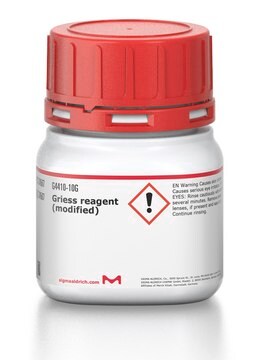71804
Sodium oxalate
reference material for titrimetry, certified by BAM, >99.5%
Synonym(s):
Ethanedioic acid sodium salt, Oxalic acid disodium salt
About This Item
Recommended Products
grade
reference material
Quality Level
Assay
>99.5%
quality
certified by BAM
technique(s)
titration: suitable
format
neat
SMILES string
[Na+].[Na+].[O-]C(=O)C([O-])=O
InChI
1S/C2H2O4.2Na/c3-1(4)2(5)6;;/h(H,3,4)(H,5,6);;/q;2*+1/p-2
InChI key
ZNCPFRVNHGOPAG-UHFFFAOYSA-L
Looking for similar products? Visit Product Comparison Guide
General description
Application
Features and Benefits
- Available as a solid in a secure glass bottle to ensure its stability for the entire shelf life until opened.
- Traceable to NIST standard reference material
- High-quality offering accurate titer determinations
- Accompanied by a certificate of analysis (CoA)
Analysis Note
Signal Word
Warning
Hazard Statements
Precautionary Statements
Hazard Classifications
Acute Tox. 4 Dermal - Acute Tox. 4 Oral
Storage Class Code
11 - Combustible Solids
WGK
WGK 1
Flash Point(F)
Not applicable
Flash Point(C)
Not applicable
Choose from one of the most recent versions:
Certificates of Analysis (COA)
Don't see the Right Version?
If you require a particular version, you can look up a specific certificate by the Lot or Batch number.
Already Own This Product?
Find documentation for the products that you have recently purchased in the Document Library.
Customers Also Viewed
Our team of scientists has experience in all areas of research including Life Science, Material Science, Chemical Synthesis, Chromatography, Analytical and many others.
Contact Technical Service









